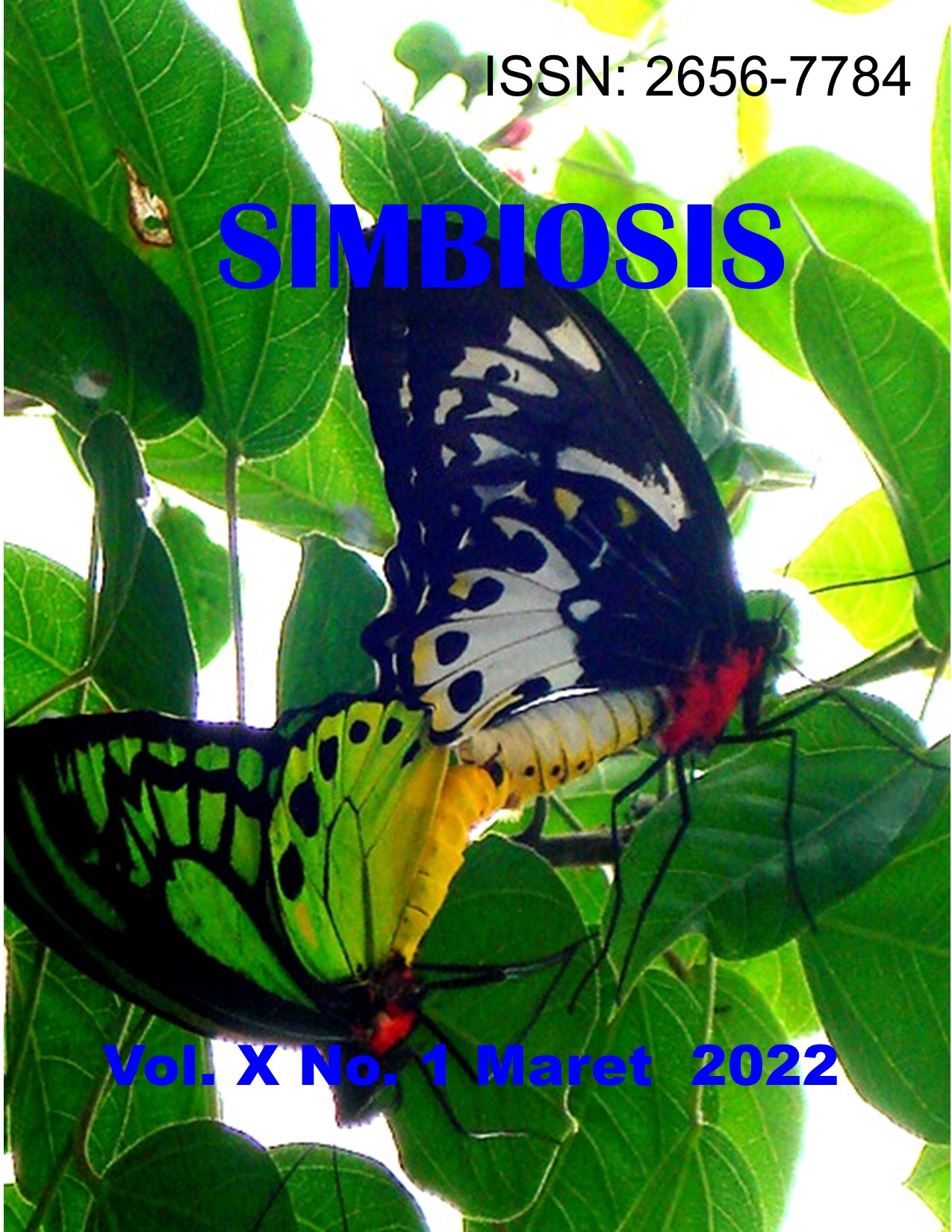DETECTION OF Escherichia coli AND TOTAL PLATE COUNT OF BACTERIA IN PIG LAWAR IN ABIANSEMAL DISTRICT, BADUNG REGENCY, BALI PROVINCE
DETEKSI Escherichia coli DAN ANGKA LEMPENG TOTAL BAKTERI PADA LAWAR BABI DI KECAMATAN ABIANSEMAL, KABUPATEN BADUNG, PROVINSI BALI
Abstract
ABSTRACT
Lawar babi is a Balinese food that is much liked, both by the locals and by tourists visiting Bali. Good and healthy food must be free of pathogenic bacteria and must meet the maximum threshold for bacterial contamination according to the Badan Pengawas Obat dan Makanan (BPOM). The purpose of this research was to determine the presence of Escherichia coli and the total plate count (TPC) of bacteria in lawar putih and lawar merah sold in Abiansemal District, Badung Regency, Bali Province. Samples were taken from 10 random traders in the Abiansemal area. This research was conducted at the Laboratory of Microbiology, Department of Biology, Faculty of Mathematics and Natural Sciences, Udayana University. Methods used in this research consists of the plating method. The test results showed that 40% of lawar merah had E. coli contamination exceeding BPOM requirements is < 3 MPN/g, while 30% of lawar putih had E. coli contamination. The highest E. coli contamination occurred in Sangeh, namely lawar merah (6.3 ± 0.76) MPN/g, while lawar putih (4.0 ± 0.49) MPN/g fluctuated. E. coli bacteria contamination in blood was highest in Sangeh at (1.9 ± 0.50) MPN/g. The results of ALT bacteria on lawar merah showed 80% did not meet BPOM requirements is < 1 x 106 CFU/g, while lawar putih did not meet BPOM requirements by 40%. The highest ALT value in pig blood in Sibang Gede II (Banjar Badung) was (18.97 ± 0.42) x 103 CFU/g. The use of fresh blood as a red dye caused an increase in bacterial contamination of lawar merah.
Downloads
References
Badan Standardisasi Nasional. 2009. Batas Maksimum Cemaran Mikroba dalam Pangan. Standar Nasional Indonesia. Indonesia.
Dinas Kesehatan Kabupaten Badung. 2018. Profil Kesehatan Kabupaten Badung tahun 2017. Dinas Kesehatan Kabupaten Badung. Badung.
Huang, M. P. H., Jennifer, Y., Henao, O. L., and Patricia, M. G. 2016. Infection with Pathogens Transmitted Commonly Through Food and the Effect of Increasing Use of Culture-Independent Diagnostic Test on Surveillance Foodborne Diseases Active Surveillance Network, 10 U.S Sites, 2012-2015. Morbidity and Mortality Weekly Report. Vol. 65 (14): 368-371.
Isnawati, A. 2008. Sarana Produksi Pada Beberapa Pabrik Makanan dan Pengujian Mutu Makanan. Dirjen POM Depkes RI. Jakarta.
Jawetz, E., Melinck, J. L., Adelberg, E. A., Books, G. F., Butel, J. S., and Orston, L. N. 1995. Mikrobiologi Kedokteran Edisi 20. EGC. Jakarta.
Juwita, U., Haryani, Y. dan Jose, C. 2014. Jumlah Bakteri Coliform dan Deteksi Escherichia coli pada
Nusabali. 2017. Badung Tetapkan Kasus KLB. https://www.nusabali. com/berita/11597/badung-tetapkan-status-klb. Diakses pada Tanggal 2 November 2020.
Primadistya, K. E. 2012. Lawar Sebagai Makanan Tradisional Bali. http://kadek-elda/2012/01/lawar-sebagai-makanan-tradisional-bali.html. Diakses pada tanggal 21 September 2020.
Purnama, S. G., Purnama, H., dan Subrata, I. M. 2017. Kualitas Mikrobiologis dan Higiene Pedagang Lawar di Kawasan Pariwisata Kabupaten Gianyar, Bali. Jurnal Kesehatan Lingkungan Indonesia. Vol. 16 (2): 56-62.
Rahayu, S. A. dan Gumilar, M. H. 2017. Uji Cemaran Air Minum Masyarakat Sekitar Margahayu Raya Bandung dengan Identifikasi Bakteri Escherichia coli. IJPST. Vol. 4 (2): 50-57.
Trisdayanti, N. P. E., Sawitri, A. A. S., dan Sujaya, I. N. 2015. Higiene Sanitasi dan Potensi Keberadaan Gen Virulensi E. coli pada Lawar di Kuta: Tantangan Pariwisata dan Kesehatan Pangan di Bali. Public Health and Preventive Medicine Archive. Vol. 3 (2): 124-132.
Veronica, S., Hendrayana, M. A., dan Sukrama, I. D. M. 2019. Kualitas Mikrobiologis Lawar Merah Babi Menggunakan Metode Total Plate Count. Jurnal Medika Udayana. Vol. 9 (9): 1-9.

This work is licensed under a Creative Commons Attribution 4.0 International License.










